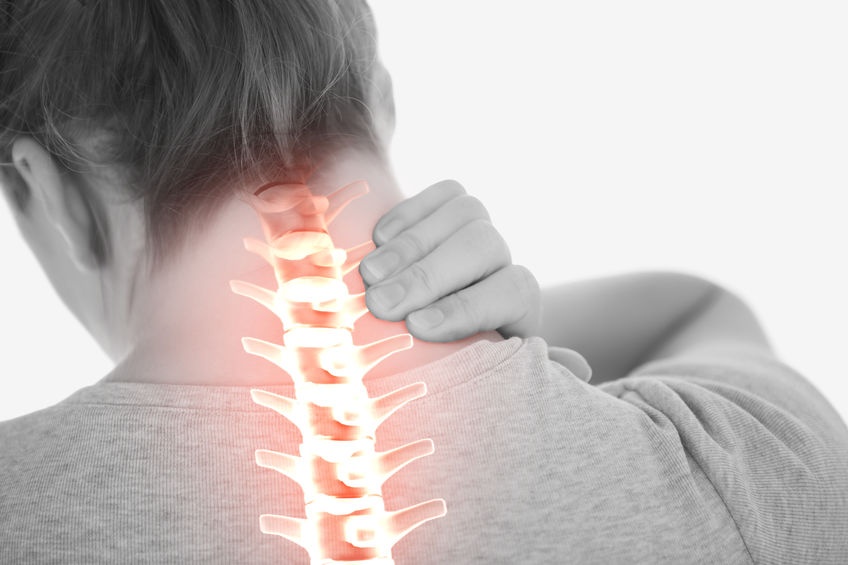What Causes Neck Pain and Treatment

Neck pain can occur due to a chronic spinal condition or an injury to the cervical (neck) spine. Around 50% of neck pain can resolve without any treatment. However, for patients with chronic neck pain, pain management therapy may be required.
What Are The Risk Factors For Neck Pain?
Neck pain is more common for persons who:
- Are over the age of 50 years
- Have poor posture
- Sleep in bad positions
- Suffer car injuries and accidents
What Causes Neck Pain?
Neck pain often results in limited movement of the neck muscles, as well as stiffness.
Whiplash
Also called a cervical strain, whiplash occurs when neck muscles and ligaments develop strains and small tears due to an accident. This also causes muscle spasms, neck stiffness, and headaches.
Cervical Osteoarthritis
Wear and tear to the joints of the upper spine results in cervical arthritis. This pain is often described as dull or sharp, and it can radiate into the shoulder regions.
Cervical Stenosis
Degenerative changes affect the bones of the cervical spine, which are called vertebrae. This often leads to narrowing of the spinal canal or spinal stenosis.
Herniated Disc
When an intervertebral disc’s inner gel-like material protrudes from the protective outer layer, it can pressure and irritate the cervical spinal nerves. This can lead to neck pain, as well as arm weakness, numbness, and tingling.
What Are The Symptoms Associated With Neck Pain?
A person who has a cervical spinal condition often has severe pain in the neck, stiffness, and can suffer from headaches. When pressure is on one or more spinal nerves, the patient may experience shooting pain down one arm, accompanied by tingling, weakness, and/or numbness. Anxiety, depression, and fatigue are also associated with neck pain.
Is Neck Pain a Common Occurrence?
Based on statistics from research reports, approximately 10 percent of the general population suffers from neck pain. Chronic neck pain is more common among computer workers, women, and older people.
How is Neck Pain Treated?
Treatment of neck pain depends on the cause, the severity of the condition, and the patient’s willingness to participate in treatment. The pain specialist will use a combination of therapies, including:
Physical Therapy
The therapist uses electrical stimulation, massage, ultrasound therapy, and heat/cold therapy to provide pain relief. Physical therapy involves using strengthening and stretching exercises to improve neck flexibility and mobility.
Medications
For muscle spasms, the pain specialist may prescribe Baclofen or Robaxin, two muscle relaxants. Severe pain is often treated with prednisolone or dexamethasone, which are corticosteroids. Nonsteroidal anti-inflammatory drugs (NSAIDs) are also used, such as naproxen and ketoprofen.
Facet Joint Injection (FJI)
This procedure involves the insertion of fine needles into the tiny facet joints along the back of the cervical spine. According to controlled studies, X-ray guidance (fluoroscopy) is used to place the needles, and a long-acting anesthetic is instilled onto the nerves, with or without a corticosteroid agent. FJI’s have an 85% success rate.
Trigger Point Injections (TPI)
For painful contracted muscles of the neck, the doctor can inject an anesthetic into the area. This works to deactivate the trigger point and relieve pain. According to a clinical study, TPIs are 100% effective.
Trending Health Topics
- ADHD
- Allergies
- Arthritis
- Bipolar Disorder
- Bunions
- Car Accidents
- Chron's Disease
- Common Cold
- COPD
- Depression
- Dry Skin
- Dry throat
- Eczema
- Fungal Infection
- GERD
- HIV/AIDS
- Hypertension
- Irritable Bowel Syndrome (IBS)
- Multiple Sclerosis
- Osteoarthritis
- Psoriasis
- Rheumatoid Arthritis
- Skin Disorders
- strep throat
- Type 2 Diabetes
- Uncategorized